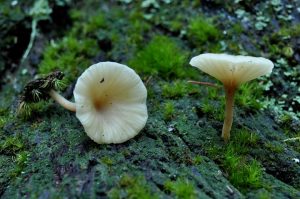#107: The Banana and Fusarium oxysporum f. sp. cubense
The banana that you know and love may soon be a thing of the past. I know, you probably think that I’m exaggerating the threat to this ubiquitous crop, but the possibility of bananas disappearing from grocery shelves forever is very real. In fact, it nearly happened once before. Here is a brief history of the modern banana: in the 1950’s, bananas were wiped out by a disease called Panama Disease. To save the crop, a resistant variety was discovered. Today, Panama Disease has evolved to attack the resistant variety, thus threatening to decimate banana production for a second time. This time, however, there is not a fallback option.







![#011: Characteristics of Kingdom Fungi [Archived]](https://www.fungusfactfriday.com/wp-content/themes/hueman/assets/front/img/thumb-small-empty.png)

